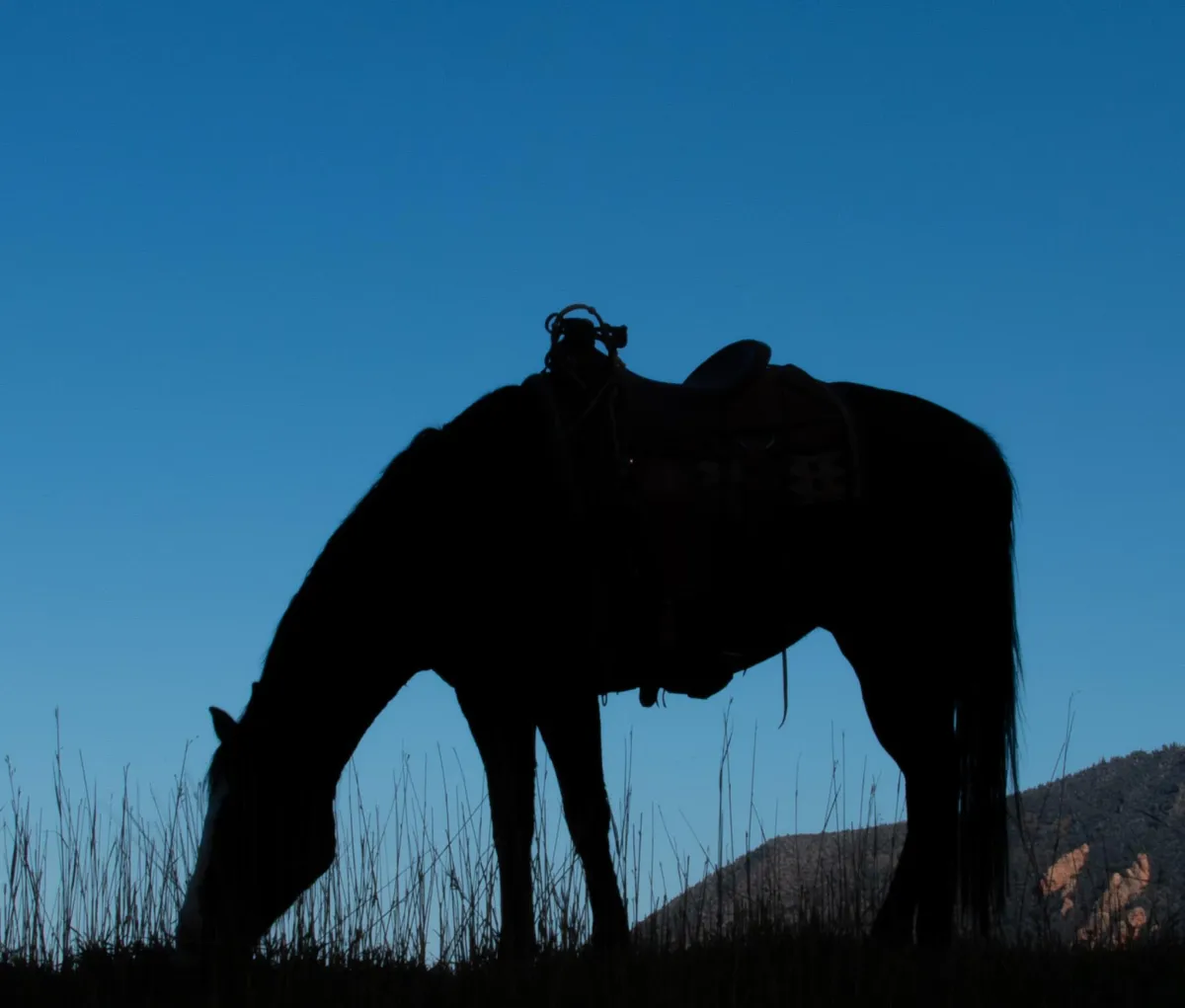
Haste Makes Waste
Haste Makes Waste
"Take the Time it Takes and it Takes Less Time." This is the adage I have heard many a time from Jim Montgomery training horses in Veyo, Utah, and it has become a large part of my understanding of making a good horse. Unfortunately, as has been the case for millennia, we are always in a hurry to move on to the next thing and tend to be just as antsy as any hot-blooded barrel horse ever was.
As with so many areas of life, having a finished horse is a matter of years of preparation; not a matter of a week-long tune-up just before the horse is needed. Moreover, due to the number of clinicians and competitions out there that promote horsemanship in terms of how far a colt can be brought along in only two or three days, I believe much of the general public has the wrong idea about what colt starting, as well as the rest of a horse's training, really looks like. Moreover, starting a colt successfully requires more than two or three sessions, and these are just a few reasons for why.
1. As far as I am concerned, a horse learns more through consistent daily training, even if it is only 20 minutes-45 minutes a day, than through a long, 3 day event. This is also true of our own learning process as humans.
For example, if you were to spend a 12 hour period doing nothing but learning to play piano, you would indeed learn much more in that day than the person who only spent twenty minutes. However, such a level of commitment to piano playing is, for the vast majority, an unsustainable amount of time. Meaning, it will likely be a few weeks before you have the time and motivation required to repeat such a long session, by which time you will have forgotten nearly everything you had learned. Not only so, but even during that twelve hour session, there will be a certain point (likely no more than two or three hours in) wherein your learning ability rapidly begins to diminish. Meanwhile, if you had spent only half an hour per day, six days per week, you will have put in twelve high quality hours of practice in only two weeks; and being more highly motivated due to the lesson times being more manageable, you will likely have put in a few extra hours on top of that just because you felt like it. Over the long run (and really not even very long) it is the consistent player who will vastly outperform the sporadic player.
It is just the same with a colt's mind. He can only engage at a high level of learning for about twenty to forty-five minutes. After that, you are greatly put to a point of diminishing returns in your training efforts. You can take longer rides on a trail and you can work fairly long periods gathering cattle, but as far as actual training is concerned the colt will learn much better, will be much happier, will have far greater confidence, and will even learn faster over the long run, than the colt who was rushed through the gauntlet.
Another thing to keep in mind is the colt's bodily condition. Training on a young colt for hour on end is something for which colts are not built. Naturally, they can travel, unsaddled, for many a prairie mile along with the herd; but training is a horse of a different color. We are typically asking them to remain soft and light as we train them to respond to our cues by easily moving their hips, shoulders, barrel, and all while remaining light in the face. You likely won't keep a colt light for hour upon hour. Not only are their minds unprepared for such mental exertion; but their muscles are not yet properly conditioned either. Rather than using a piano lesson as an analogy, you can liken this to yourself doing stretching exercises. Only so many per day are beneficial- there is a point at which working out and stretching can actually become detrimental to your well being.
2. There is a vast difference between a colt's being comfortable with a trainer like Nick Dowers, Stacy Westfall, or Martin Black, and his being comfortable with an average rider on his back. There are myriad ways in which these trainers are able to communicate to their colts through timing and feel, which is itself only attained through thousands of hours, not only on horseback, but on horseback while training and learning from other great horsemen and women. Such horsemen are able to stop many a storm from occurring long before the horse even has the idea of blowing up or reacting, simply because once you have started so many thousands of horses, you get a very good sense of how things are going to happen and, with that sort of a sixth sense, you can gently reassure your colt or propel him forward at just the right time without having to give it any direct thought. It becomes as natural to you as speaking your first language. The rider who has only started a hundred colts or less, is not possibly going to have such timing and feel, and will soon find himself in several awful predicaments which, while they may or may not injure himself or his colt, they will certainly be a setback to the colt's training to some degree. In the case of an average rider getting on a colt with just a few days' riding on him, it is pretty likely that he will do something to get hurt, regardless of how great the colt was going through an obstacle horse with a top hand in the saddle.
3. These clinics and competitions are bringing the trainer tens of thousands of dollars (or at least have the potential to if they win) over the course of three days. Trainers are able to dedicate themselves wholly in such events to just one or two horses, without having to worry about training any other horses and without having to do any other form or ranch work. They can afford to do this because they will be so highly compensated with money as well as some amount of connections and prestige. However, even if the three day event-style of training was a great all-around method for colt starting, it would require that the owner be willing to part with several thousand dollars for the trainer to focus solely on one horse for those three days. The trainer would need such pay because he is only riding that one horse rather than the dozen or perhaps twenty or thirty head that he would normally be working with the help of his assistants to saddle, unsaddle, lope, and generally care for.
In summary, such events are good for what they are good for- showcasing the ability of a trainer and a colt in an entertaining fashion in order to maintain general public interest in horsemanship. When it comes to real life at the ranch or the training facility, however, you should expect to find quite a different way of doing things.

Contact US
klaybullet77@gmail.com
(435)-590-8428

